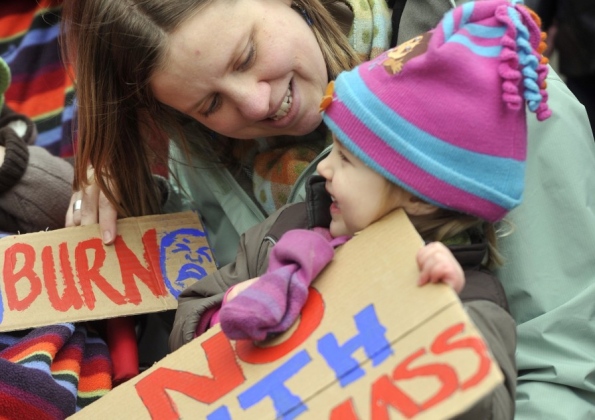Halifax Courier and Hebden Bridge Times coverage of Calderdale’s Energy Future strategy is quite interesting. So far, as far as I can see, they have only published a report that reads rather like a Calderdale Council press release, a copy of the Hebden Bridge Transition Town website’s endorsement of Calderdale’s Energy Future and and a similar followup article.
For some reason they didn’t print this letter. Maybe it’s too long. Or just boring.
Update: To my surprise, I opened the 12th April Hebden Bridge Times and found they’d printed a longer version of this letter, under the headline: “Answer our questions over Calderdale’s energy future.”
Jenny Shepherd, letter to Hebden Bridge Times, 20 Feb 2012
A couple of weeks ago, Bear welcomed Calderdale’s Energy Future and its promise of support for a variety of community groups’ projects. I welcome this project too. But Calderdale’s Energy Future is clear that community projects won’t significantly reduce the area’s carbon emissions. It expects that nearly all the targeted 2020 reductions in carbon emissions will come from:
- a greener national grid (partly the result of new-build nuclear power stations, if the government gets its way), plus energy efficiency improvements to houses, commercial and industrial buildings, and transport
- opening up the Borough to the development of large scale commercial wind farms and biomass energy (from burning wood and other natural materials including waste and energy crops) – at a time when Scottish Energy Minister Fergus Ewing says “The Scottish government is already consulting on removing support for large-scale biomass electricity-only plant” and the Friends of the Earth Policy Officer endorses the Climate Change Committee’s view that large scale biomass plants “have no role to play in our energy future.”
Living in the material world
The projected carbon emissions reductions in Calderdale’s Energy Future strategy assume an ideal world where things happen as the number crunchers predict. But climate change is complicated. Attempts to tackle one of its causes may well inadvertantly worsen the problem elsewhere. Planners call this a “wicked problem”. Wicked problems only have “clumsy solutions”, at best.
For example, Calderdale’s Energy Future estimates that micro-hydro electricity generation from old mill races will reduce the area’s carbon emissions by 0.16% of the targeted reductions for 2020, preserve the area’s industrial heritage and increase income from tourism. All this is good. But if increased tourism means more people driving around Calderdale, this could increase the area’s transport-related carbon emissions and undo the 0.16% reduction in carbon emissions. So then you have to avert this new problem – for example, by increasing use of public transport and the electric bikes that are already available to hire.
So, given this wicked problem, how effective is Calderdale’s Energy Future likely to be? I’ve asked four Calderdale Councillors a number of questions about this – but so far they haven’t answered them:
- Is it sensible to rely on the new Green Deal to reduce household energy use and carbon emissions? The Climate Change Committee, which advises the government on how to reduce carbon emissions, says that implementing the Green Deal will massively reduce the amount of cavity wall and loft insulation that’s carried out at the moment, and will slow the rate of reducing carbon emissions and energy use. They recommend that the Big Six energy companies should pay for all the home energy efficiency improvements needed to meet the 2022 national target for reducing household carbon emissions; and these improvements should be tailored to each individual house and carried out street-by-street.
- How realistic is the aim of significantly reducing Calderdale’s carbon emissions by 2020 by switching to commercial, large scale biomass energy? Where is the large volume of wood or other organic fuel coming from? If local wood fuel’s available, will newly planted replacement trees and coppices mature by 2020, in time to absorb the carbon emissions from burning the biomass? And what about the increase in air pollution and nuisance from smells and burning that could result?
- How is the Council going to guarantee the accountability, transparency and disinterestedness of the working group that it will set up to create the Calderdale’s Energy Future action plan and monitor its implementation? In particular, will it select members who are free of potential conflicts of interest? Will working group meetings be open to press and public? If working group members are also Council “partners” in carrying out the strategy, how will the Council avoid suspicions of pork barrel politics?

